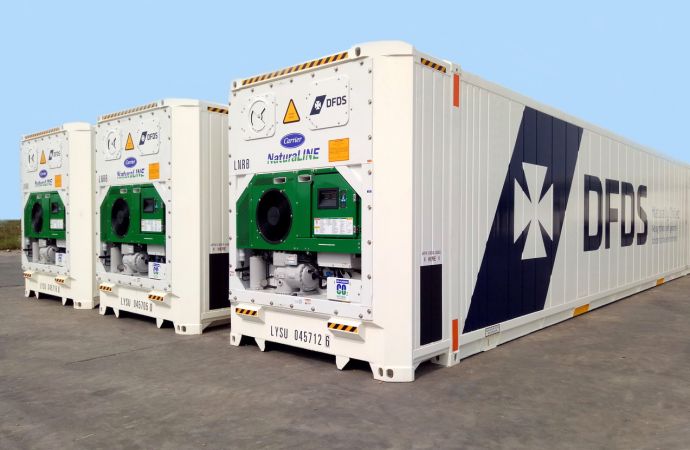A new Hussmann/LMP Purity transcritical CO2 refrigeration system recently found its home in an Aldi Food Store in West Seneca, New York. Quentin Crowe, Product Manager at Hussmann gave R744.com some insights about the installation.

In mid-September, Hussmann installed one of its CO2 transcritical “Purity” systems in a new Aldi Food Store, which held its grand opening on 1 October.
The Purity system is designed to operate efficiently in low, medium and high temperature applications as well as in combination with all three. The installation in West Seneca’s Aldi has a medium temperature capacity of 200k BTU and 60k BTU in the low temperature.
R744.com: What would you say is unique about this installation?
Quentin Crowe: The system is unique in that typically, CO2 systems are located in the building or in a machine house structure. This Purity system for Aldi was built on a unitary design with the welding between the flash tank and gas cooler done in the factory. This design allows it to be placed outdoors with no machine house required. There are top and side access panels making it easy to access all serviceable components. The total footprint of the equipment is less than that of comparable HFC systems, so there was no need for escorted freight.
R744.com: What energy savings do you expect the system to provide, as compared to a traditional HFC system?
Crowe: Considering the climate in which the system is located and the direct heat reclaim applied to a rooftop air handler, I would expect a 5-10% reduction in the store’s total energy consumption.
R744.com: Did Hussmann provide training for the system?
Crowe: Yes, Hussmann had technical staff onsite to oversee the commissioning and provide training to the contractor who will be responsible for the future maintenance. This was not the contractor’s first CO2 equipment installation, so they were easy to work with and bring up to speed on the unique features of Aldi’s Purity system.
R744.com: The system looks and operates much like an HFC system – what are the advantages of this?
Crowe: It simplifies the shipping, rigging and setting up of the unit. There is also little variation in the architecture design, since the weight and dimension are close to a standard system. It also makes it more service-friendly, since the system component layout was similar in design. Lastly, since many components were used from an existing higher volume platform, it help us leverage the best price and will carry over to less expensive service parts, which are already stocked.
R744.com: The U.S. tends to lag behind in terms of CO2 transcritical adoption – how do you see this changing, and what would you say remain the major barriers to more widespread adoption of CO2 refrigeration technology?
Crowe: Several factors have impact on this, but I would say the two main items are initial cost and energy consumption. Many of the systems sold in the U.S. today are not outperforming the lower cost HFC-based systems. In southern climates, where ambient temperatures are higher, this is even more challenging. Strict U.S. laws and regulations create many challenges in reducing first costs. Leveraging existing platforms, as was done for the Aldi store in West Seneca, is helping us to reduce first costs, and we have already proven that installation costs can be less. I believe UL and some governmental organisations should be re-evaluating some standards and creating some exceptions for CO2 because of its unique qualities.
Second, the Hussmann approach relies on transparency with the customer regarding expectations. Customers who want to explore CO2 booster systems in warmer climates, where more expensive gas cooler technology is required and there is less of a chance to fully utilise the benefits of heat reclaim, will see little or no ROI with current technology. However, emerging technologies are changing this. Even without an achievable ROI, we do encourage customers to consider applying CO2 refrigeration technology, which is helping the industry advance through learning best practices and exposing more contractors to servicing the equipment. For CO2 systems to become a major applied technology in the U.S., we must get the cost and energy ratio to where it makes sense from both an environmental perspective as well as financially.
R744.com: Thank you!
MORE INFORMATION
Related stories



